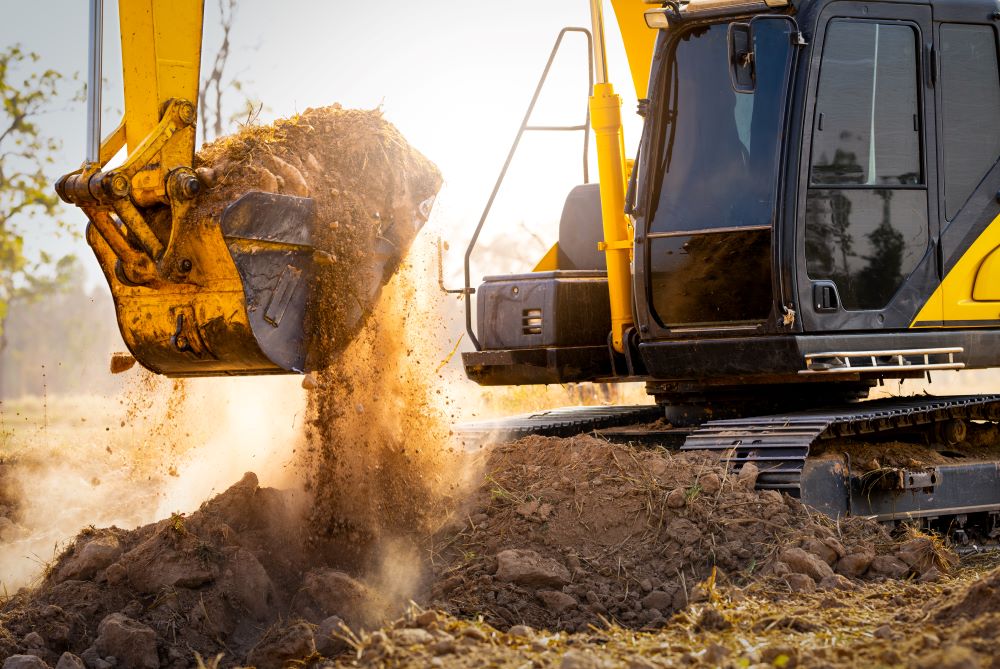
Industrial Demolition Company Tackle Urban Site Challenges
Industrial demolition is a complicated process that is essential to urban rejuvenation and growth; it involves more than merely demolishing buildings. Old structures must give way to new inventions as cities change. An industrial demolition company can help with this, since they have the knowledge and experience to handle the difficulties that come with metropolitan settings. Demolition calls for accuracy and strategic preparation; it’s not just about using force. These businesses have particular challenges while operating within municipal borders due to space constraints and a plethora of laws.
Their significance in forming our urban environments might be better understood by examining how they overcome these challenges. As we delve into this subject, we’ll examine the creative approaches that are revolutionizing industrial demolition, the function of state-of-the-art equipment, and the strict safety regulations that underpin each operation. Hold on tight as we reveal what it takes for an industrial demolition business to prosper in the face of difficult urban site issues!
OUR SERVICES
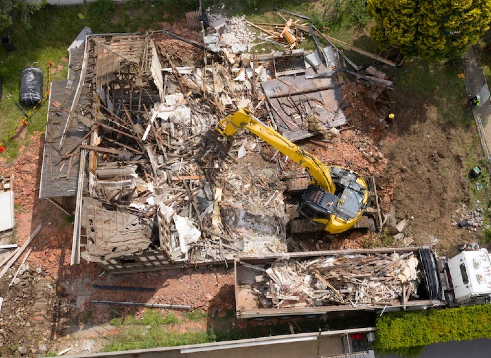
Structure Demolition. Residential, Commercial & Industrial
If your structure poses a health, safety, or environmental risk, demolition can prevent costly citations or fatal accidents. While this may seem daunting, you are just a phone call away from having your residential demolition done professionally, responsibly, and at a great price.
Talk to a Demolition Specialist Now! 916.249.5001
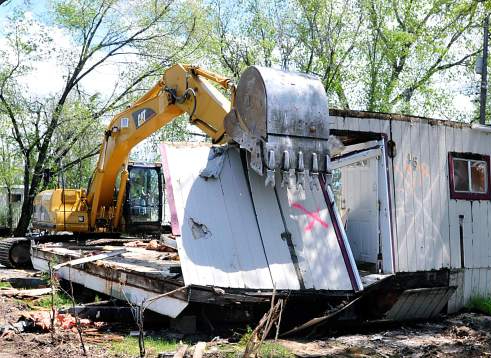
Mobile Home Demolition
We demolish and haul away mobile homes. Any size, anywhere, anyhow. We are fast, clean and competitive. We serve most of Northern California. There are many factors to consider when removing or demolishing your old trailer, mobile home, or manufactured home like: the processes involved, costs, time, contractors, debris, and permits.
Talk to a Demolition Specialist Now! 916.249.5001
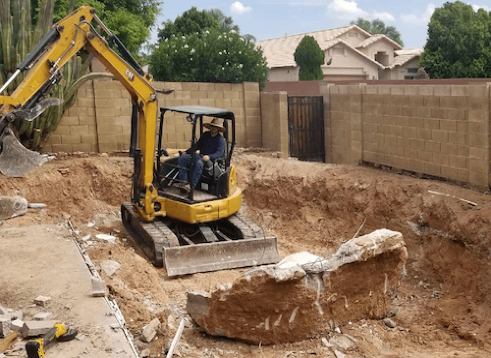
Pool Demolition
When removing a pool in Sacramento, California with the professional demolition team of Maxton Demo, you’re guaranteed peace of mind from beginning to end. From your initial request for an estimate to clean-up, you can expect our pool demolition process that’s completely professional and safe.
Talk to a Demolition Specialist Now! 916.249.5001
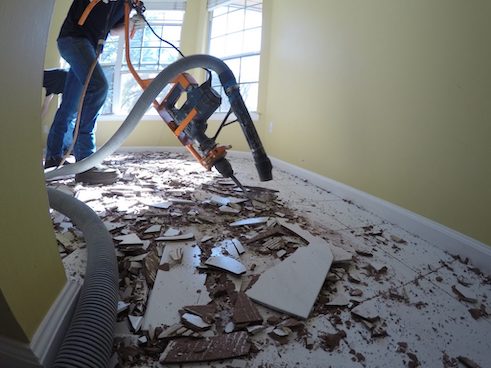
Floor Demolition
Flooring demolition, like any other major home renovation work, requires a specific set of skills and tools to be performed properly. You need experts in flooring demolition to get you the best floors possible. Contact us to find out more about how we can help you today.
Talk to a Demolition Specialist Now! 916.249.5001
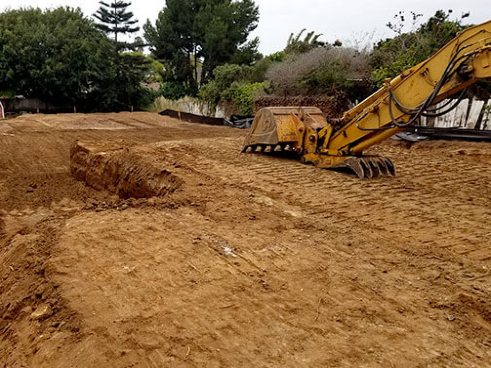
Grading & Excavating
If you need an experienced excavator and grader in Sacramento, call us today. One of the many reasons that residential, commercial, and industrial customers choose to work with us is because we’re able to provide a broad range of services to help construction-related projects get done in less time and at a reduced cost.
Talk to a Demolition Specialist Now! 916.249.5001

Roof Snow Removal
Heavy snow & ice dams can cause significant roof and home damage. Roof Snow removal is our specialty during the winter months. Serving the Sacramento, California area for 10 years, we can get your roof snow removed and promise a quick response and reasonable rates.
Talk to a Demolition Specialist Now! 916.249.5001
An Overview of the Difficulties Demolition Companies Face at Urban Sites
Urban demolition is a difficult undertaking. Businesses in heavily populated locations confront particular difficulties. Planning is essential because of the limited area and adjacent buildings. Furthermore, compared to rural areas, the environmental, safety, and regulatory issues surrounding urban demolition are more complicated.
In metropolitan settings, noise limits are often severe. Demolition enterprises need to operate effectively while causing the least amount of disruption to both businesses and people. This calls for careful preparation in addition to the usage of specialist noise-cancelling devices. Because dust and debris may be hazardous to the environment and public health, an industrial demolition company must also take precautions.
Environmental issues are also quite important. Hazardous materials, such as asbestos or lead paint, are found in many older buildings and must be handled and disposed of carefully. To guarantee that these items are appropriately confined and disposed of in accordance with all relevant legislation, demolition contractors must adhere to stringent processes.
Site access might sometimes be challenging. Logistics for moving equipment and clearing trash are made more difficult by congested streets and high traffic. To minimize delays, this calls for meticulous collaboration with local authorities and the execution of traffic control strategies.
Due to neighborhood expectations and local laws, timelines are strict. Urban demolition projects need careful planning in order to prevent downtime and guarantee that the work is completed without interruptions or delays. This calls for meticulous attention to detail and the capacity to swiftly adjust to shifting conditions.
Innovative Approaches Employed by Industrial Demolition Companies
When it comes to applying creative solutions to difficult urban problems, industrial demolition companies are at the forefront. These businesses use cutting-edge methods to improve productivity and simplify procedures. Some of these solutions are as follows:
Demolition Robots: These are remote-controlled devices with specialized equipment for dismantling brick, concrete, and other construction materials. Because these robots can operate in dangerous situations and in confined places, there is a lower chance of worker harm.
High-Reach Excavators: Skyscrapers and chimneys are among the towering buildings that high-reach excavators are employed to destroy. These devices can securely disassemble structures piece by piece because of their extended arms, which may reach up to 100 feet.
Implosion: One technique for swiftly and effectively bringing down big buildings is controlled implosion. In order to cause a building to collapse in on itself, explosives are positioned carefully at crucial locations throughout the structure.
Dust Suppression Systems: To lessen the quantity of dust emitted during demolition, industrial demolition companies use dust suppression systems. By controlling airborne particulates using water or chemical agents, these systems improve worker and neighbor safety.
Recycling and Salvage: By reusing and recycling components from destroyed buildings, several industrial demolition companies have embraced sustainable methods. This lessens trash and lessens the negative effects of destruction on the environment.
Virtual Reality Simulation: To plan and visualize intricate demolition operations, several industrial demolition companies use virtual reality simulation technology. This enables them to see possible obstacles and create solutions before beginning the real task.
Technology’s Place in Contemporary Industrial Demolition
In contemporary industrial demolition, technology is essential. It improves accuracy and efficiency all the way through the process.
Planning and Design: To guarantee the project’s safety and success, careful planning and design must be done before any demolition work can start. In this phase, technology is essential since it offers sophisticated tools for surveying, modeling, and engineering the demolition process.
Before destruction, for instance, buildings are precisely mapped out, and any risks are identified using 3D laser scanning technology. This enables engineers to foresee potential problems and develop comprehensive plans for the demolition process.
Demolition Techniques: Manual labor and large equipment, such as bulldozers or wrecking balls, were used in traditional industrial demolition techniques. But as technology has advanced, more accurate and effective techniques have been created.
One of these methods is called implosion, in which a building is controlled by using strategically positioned explosives. Advanced computer software enables the exact measurements and computations needed for implosion.
Excavators fitted with specific attachments are used in high-reach arm demolition, another contemporary method, to disassemble buildings from top to bottom. Because these attachments are remotely controllable, workers may operate safely away from potentially dangerous buildings.
Safety precautions: Because industrial demolition entails handling large machines and possibly dangerous materials, safety is of utmost importance. Safety precautions on demolition sites have significantly increased thanks to technology.
Drones with cameras, for instance, may be used to check buildings for any dangers before employees arrive on the scene. Better planning and decision-making are made possible, and the chance of accidents is decreased.
Additionally, during demolition, the movement of buildings is tracked using sophisticated monitoring systems. This enables personnel to swiftly and securely leave the area in the event of any unforeseen changes or collapses.
Garbage Management: Managing the garbage and debris produced during industrial demolition is another important function of modern technology. Concrete, metal, and wood are separated for recycling or appropriate disposal using sophisticated sorting and recycling machinery. By eliminating the need for human sorting, this not only lessens the negative environmental effects of demolition but also saves time and money.
Remote Demolition: In contemporary industrial demolition, remote-controlled demolition equipment is becoming more and more common. This enables workers to precisely operate the machines while working from a safe distance.
For more accurate and efficient structural disassembly, these remote-controlled robots may also be fitted with specialist accessories like shears or crushers.
To sum up, technological advancements have transformed the industrial demolition sector, making it safer, more effective, and more ecologically friendly. We may anticipate the development of even more creative and environmentally friendly demolition techniques as technology develops further.
Rules and Safety Procedures for Urban Demolitions
There are particular safety risks associated with urban demolition programs. Demolition businesses are subject to stringent laws intended to safeguard the public and employees.
Comprehensive site evaluations are carried out prior to the start of any project. Potential risks such as asbestos or unstable buildings are identified by these assessments. To guarantee that all risks are reduced, thorough preparation is necessary.
All team members must wear personal protective equipment (PPE) while on the job site. Gloves, respirators, and hard helmets protect against injury and exposure to dangerous materials. Effective communication is also essential while urban demolitions are taking place. Teams handle activities efficiently in busy urban settings by using clear signals and standards.
Local governments often enforce site-specific regulations. In crowded regions, compliance guarantees that demolition operations reduce noise pollution, dust dispersion, and traffic interruptions. Teams are kept up to date on the newest safety procedures and technological advancements via regular training sessions. This continual learning is essential to maintaining the industry’s high standards.
The Importance of Responsible Practices and the Future of Urban Demolition
The field of urban demolition is changing quickly. The need for effective and ethical demolition techniques is growing as cities expand and transform. For these operations to be completed efficiently and responsibly, industrial demolition companies are essential.
As technology continues to progress, we may anticipate the emergence of increasingly inventive approaches. These will reduce their negative effects on the environment while simultaneously increasing efficiency. For example, modern equipment made for precise work decreases the amount of waste produced while improving site safety.
Since metropolitan locations provide particular difficulties, responsible behaviors are nonetheless crucial. Strict adherence to safety requirements is crucial for industrial demolition companies. This pledge protects the public, employees, and the environment against possible risks.
Professionals in the sector working together will be essential in the future. Improved results for a variety of tasks may result from exchanging best practice information. Sustainable solutions that benefit communities today and in the future must always be the major emphasis.
As urban places continue to change over time, so too must our methods for demolishing them. The foundation for a successful industrial demolition transformation of our urban landscapes is laid by a focus on accountability, creativity, and community involvement.
How Effective Industrial Demolition Operates in Constrained Urban Areas
Imagine a busy metropolis where every square foot of land is valuable and tall towers jut against the sky. Industrial demolition is essential to changing the environment in this urban jungle, creating room for new construction while resolving space constraints. It is becoming more and more crucial to comprehend how industrial demolition works effectively in constrained spaces as cities continue to expand higher and outward.
It takes certain knowledge and expertise to demolish buildings in busy areas, whether it’s an old factory or a run-down warehouse that has to be cleaned out. A lot more goes into it than just demolishing barriers, from negotiating rules to causing the least amount of disturbance in crowded regions.
Knowing About Industrial Demolition
Dismantling huge buildings, usually for industrial reasons, is referred to as industrial demolition. This kind of demolition entails meticulous planning and execution in addition to straightforward destruction. Depending on the size, location, and materials of the building, industrial demolition may entail a variety of techniques, including deconstruction, mechanical destruction, and implosion.
In addition to destroying, the objective is to do so effectively and safely. Understanding structural engineering, environmental issues, and safety requirements is often necessary for projects. The removal of potentially dangerous elements from older buildings, such as lead and asbestos, is another aspect of industrial demolition.
From managing hazardous chemicals to making sure the neighboring surroundings are not impacted throughout the process, every site has its own set of difficulties. Before moving further, a knowledgeable team must evaluate these variables. These difficulties are exacerbated in congested urban areas; thus, a well-thought-out strategy for industrial demolition is essential.
In industrial demolition operations, planning is essential. Creating plans that adhere to local compliance regulations and reduce noise, dust, and waste is crucial. Gaining expertise in this area is more important than ever for future development projects since metropolitan areas are becoming more crowded.
Difficulties in Demolition in Constrained Urban Areas
Structure demolition in constrained urban areas has special difficulties that call for meticulous preparation and execution. Because of the restricted space, conventional demolition techniques may not be practical. When it comes to industrial demolition in constrained urban areas, some typical difficulties include
Restricted Access: It may be challenging to get to the demolition site since city areas are often encircled by other structures, roads, and pedestrian walkways. Large equipment utilization may be restricted due to this restricted access, necessitating the adoption of other techniques for structural demolition.
High amounts of noise and vibration may be produced during demolition activities in constrained urban areas, upsetting surrounding companies and inhabitants. To reduce these disruptions, further precautions could be required, such as the use of vibration dampeners and sound barriers.
Safety Concerns: When demolition operations are carried out in urban areas, there is a greater chance of mishaps and injuries due to the restricted workspace. To safeguard employees, onlookers, and adjacent buildings, careful planning and adherence to safety procedures are essential.
Environmental Impact: If demolition is not properly handled, the large amounts of dust, debris, and toxic materials it creates may have an adverse effect on the environment. This becomes much more of a worry in congested urban areas when containment and control techniques are limited.
Structural Stability: Because surrounding structures are so close together in urban areas, it is crucial to carefully organize the demolition process to guarantee the stability of nearby structures. Any mistakes or miscalculations might lead to expensive damage and perhaps legal repercussions.
Disruption to businesses and inhabitants: Demolition in constrained urban areas may cause discomfort to local inhabitants and interfere with the regular operations of surrounding businesses. Stakeholder communication and meticulous scheduling are necessary to minimize this disturbance.
Debris Management: Due to a lack of storage and transportation alternatives, disposing of demolition debris in constrained urban areas may be difficult. To effectively remove and dispose of the waste, specialized tools and procedures may be required.
Road closures, noise limits, and garbage disposal procedures are just a few of the stringent rules and permits that cities often impose on demolition operations. To prevent delays or penalties, they need to be handled properly.
In order to overcome these obstacles and guarantee the security of the surrounding community, nearby properties, and employees, demolition of buildings in constrained urban areas requires a high degree of skill, preparation, and cooperation. For a project to be successful, it is essential to deal with a respectable industrial demolition company that has urban demolition expertise.
Tools and Methodologies for Industrial Demolition
Industrial demolition calls for specific tools and methods designed for urban environments. The excavator, which has attachments like hydraulic hammers or shears, is one often utilized piece of equipment. These gadgets quickly break down steel and concrete constructions.
The high-reach demolition excavator is another crucial piece of equipment. It can securely disassemble multi-story structures in tight spaces using its extended arm, reducing the spread of dust and debris. In addition to specialized tools for cutting and breaking up materials, other equipment used in industrial demolition may include loaders, cranes, and skid steers for the disposal of waste.
For safety in confined areas, methods like controlled demolition are essential. This technique deliberately collapses a structure without damaging neighboring structures by using explosives or precise cutting. Selective demolition is an additional method that entails methodically tearing down some parts of a building while preserving the others. In metropolitan settings, this technique is often used to save nearby or historic properties.
Robotic demolishers are also becoming more and more popular because of their safe access to difficult-to-reach places. They provide operators more command over dangerous circumstances, guaranteeing effective removal while lowering hazards. In densely populated urban settings, selecting the appropriate equipment and methods is essential for industrial demolition operations to be effective.
Advice for Selecting a Trustworthy Industrial Demolition Company
Reputation is important when choosing an industrial demolition company. Seek out companies that have received good feedback and reviews. Reliability is shown by a solid record. Additionally, look for businesses that have expertise with urban demolition projects and a thorough awareness of local laws and safety procedures.
Verify their licenses and qualifications. The project will be completed safely and lawfully if local rules are followed. Never be afraid to inquire about their experience, particularly in metropolitan environments. Asking past customers for references may also provide important information about a business’s competence and dependability.
Ask several businesses for thorough quotations. You can prevent unforeseen costs later on by understanding what you’re paying for thanks to transparent pricing. When comparing estimates, take into account elements like project schedules, tools used, and safety procedures.
Throughout the process, communication is crucial. Select a business that pays attention to your demands and responds to inquiries right away. A trustworthy industrial demolition company will update you on the status of the job and any unforeseen difficulties.
Ask them about their safety procedures and policies. In addition to safeguarding employees, a dedication to safety reduces the amount of disturbance that the demolition project causes to nearby companies and citizens.
Verify that the business is adequately insured. This covers workers’ compensation for their staff as well as liability insurance for any possible harm to nearby premises.
Lastly, when selecting an industrial demolition company, follow your gut. Select a business that you are comfortable dealing with throughout the process and that inspires confidence in their skills.
Clever Techniques for Smooth Industrial Demolition in Urban Areas
Industrial demolition calls for a combination of skill and planning to operate effectively in constrained urban areas. Choosing the appropriate tools and methods is crucial due to the particular difficulties presented by urban settings. It involves more than simply demolishing buildings; it involves doing it in a way that causes the least amount of disturbance.
It is essential to collaborate with a trustworthy industrial demolition company. Their background may make the difference between a trouble-free operation and future issues. They have access to specialist equipment, are aware of local laws and safety procedures, and make sure every job is completed without a hitch.
The intricacies of urban demolition don’t have to be difficult to handle. Harmony in the midst of busy city life may be maintained while achieving successful outcomes with proper preparation and implementation. Whether you’re managing a big project or working on smaller ones, keep in mind that community concerns and safety don’t have to be sacrificed for expediency. If you follow these guidelines, your next industrial demolition project will be successful.
Do you have a Question?
Talk to a Demolition Specialist Now! 916.249.5001
Request Formal Quote